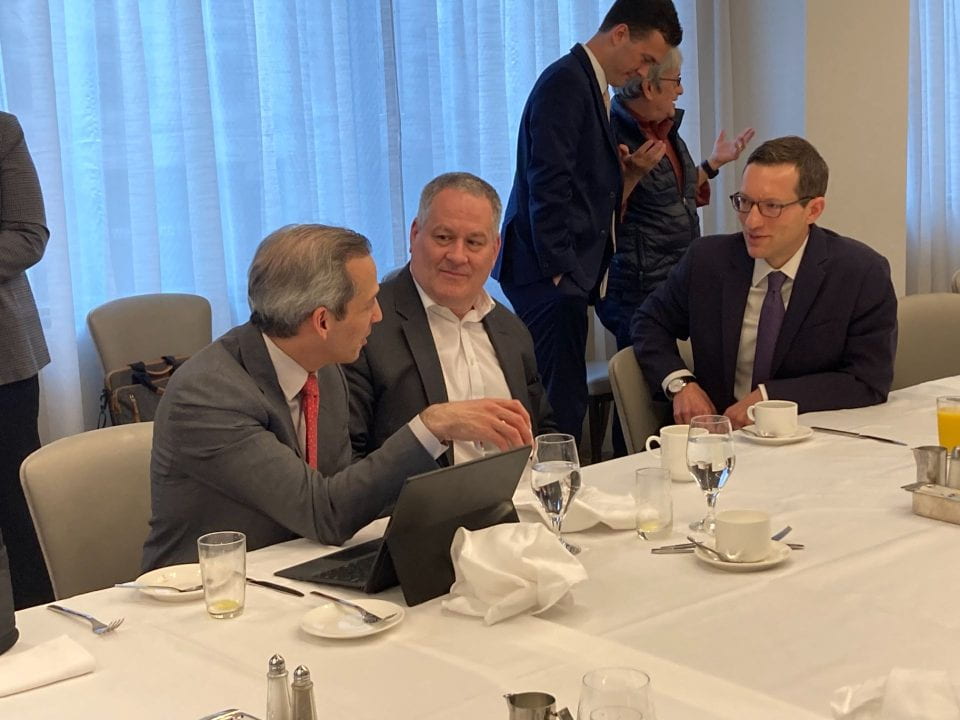WASHINGTON --- This has been the most transformative year for U.S. force posture in the Indo-Pacific in a generation, Ely Ratner, assistant defense secretary for Indo-Pacific security affairs said today.
Even with Russia's invasion of Ukraine, the Hamas attack on Israel, terror attacks in the Red Sea and more, DOD has concentrated on the "pacing challenge" for the United States -- China, he told the Defense Writers Group.
The U.S. Indo-Pacific defense strategy has made steady and impressive progress over the past year, Ratner said. While the force posture progress is perhaps the most notable, other aspects of the strategy have contributed to the overall U.S. position in the region.
On the defense side, Secretary of Defense Lloyd J. Austin III has concentrated on China, because it "has been identified as the only country in the world with both the will and, increasingly, the capability to reshape the international order," Ratner said. "That was the assessment at the time of the release of the National Defense Strategy, and that remains the assessment today."
China has the ambition and the will and is developing the capabilities to become "the national security challenge of our time," Ratner said.
Still, the United States is rising to the challenge, the assistant secretary said.
Austin's travels throughout the region over the past year have also been marked by major achievements in implementing strategy in the region, Ratner said. In December 2022, the Australia-U.S. talks ushered in major new force posture initiatives in Northern Australia in January 2023, he said.
During talks with Japan, there were announcements of major revisions to U.S. force posture in Japan, including the stand-up of a Marine Littoral Regiment in Okinawa, the Marines most advanced fighting formation. There were other revisions that made "U.S. posture in Japan more resilient, more mobile, more distributed and more lethal," he said. In addition, the two nations agreed to increase cooperation and exercises and discussed Japan's counterstrike capabilities.
In February, Austin traveled to Manila where he negotiated for four more enhanced defense cooperation agreement sites. This enhanced the strategic opportunity for U.S. forces to work with Philippine counterparts, he said.
Austin traveled to the region in May and June, met with many allies and partners. Ratner said Austin discussed the United States' ideas for the region with these partners. The U.S. strategy is shared by the Association of Southeast Asian Nations, India, Australia, Japan, South Korea, the Philippines and by some European nations as, well, Ratner said.
"This is not an American vision for the region," the assistant secretary said. "This is a vision shared by our allies and partners."
Austin visited New Delhi and signed a new defense industrial base cooperation road map. Ratner said this is a historic agreement "that is setting our countries toward a deeper level of cooperation and an area that has been aspirational for decades."
Austin became the first U.S. secretary of defense to travel to Papua New Guinea, where he signed a new Defense Cooperation Agreement. "We are looking to increase access in [Papua New Guinea] through some upgrading of their port and airport facilities and other critical step[s] in terms of working toward that more distributed posture in the region.
The secretary journeyed to Brisbane for more talks with Australian leaders that continued furthering force posture cooperation across all domains, including space.
Finally, last month, Austin spent 10 days in the region visiting India, South Korea and Indonesia, where he attended the Association of Southeast Asian Nations defense ministers meeting.
"Within a 50-day period the secretary met face-to-face with all five of our treaty allies in the Indo-Pacific region, Thailand, the Philippines, Australia, Japan and South Korea," Ratner said. "These are remarkable engagements with our allies during a time [when] there are other things going on in the world."
"We are, through the investments we are making, more capable in the region," he said. "We're more forward in the region due to the force-posture changes that we made. And we're more together in terms of really remarkable progress and deepening our cooperation with our allies and partners."
Others:
DOD staff working on new 'mil-to-mil' communication with China | InsideDefense.com


